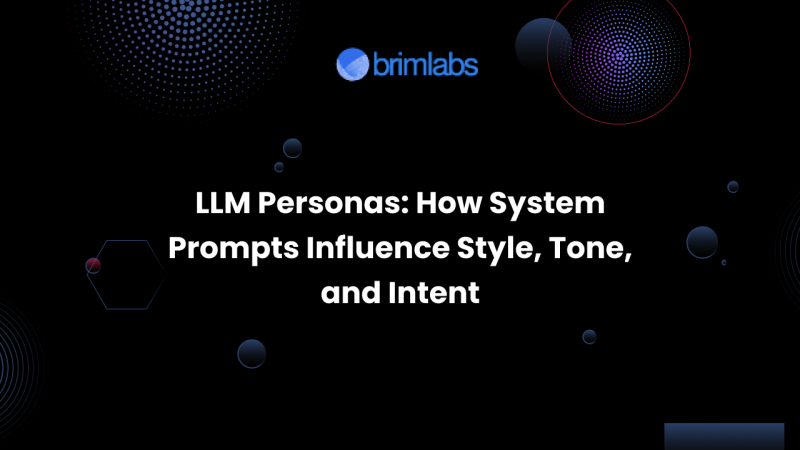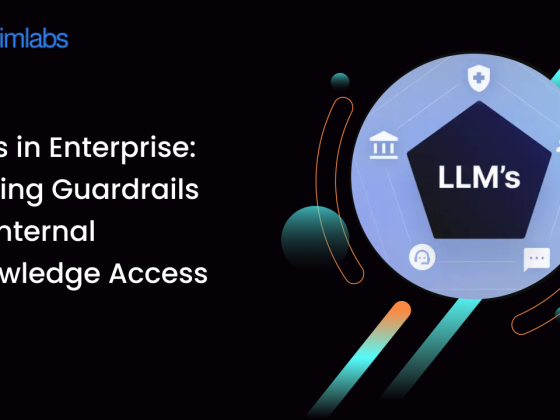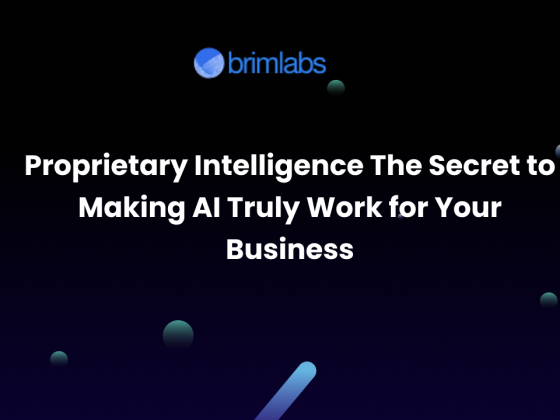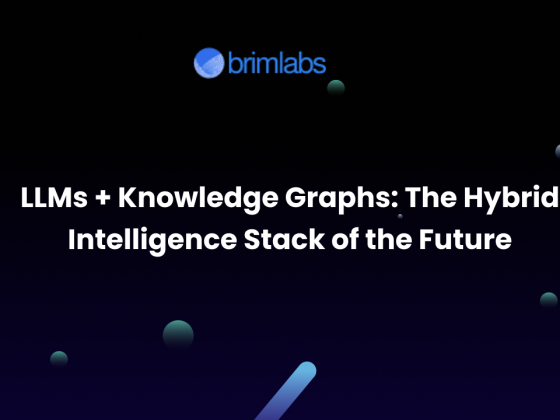As LLMs become increasingly integrated into enterprise workflows, including customer service, sales, marketing, and product development, understanding how to guide and personalize their behavior has become a critical challenge. One of the most powerful yet often underappreciated tools for shaping an LLM’s output is the system prompt.
These behind-the-scenes instructions act as the blueprint for defining how the LLM behaves. Whether it communicates professionally or playfully, responds concisely or with elaboration, or sounds neutral or persuasive, the system prompt creates LLM personas. These are distinct character profiles that influence the AI’s tone, style, and intent across interactions.
In this blog, we’ll explore:
- What system prompts are
- How they shape an LLM’s persona
- Use cases across industries
- Challenges and best practices
- Why this matters for businesses today
What Is a System Prompt?
A system prompt is a foundational instruction given to an LLM before any user interaction begins. Unlike user prompts, which are dynamic and come from the end user during a conversation, system prompts remain static and help set the rules for how the AI should think, respond, and communicate throughout the session.
For example, a system prompt might say:
“You are a helpful assistant who responds in a friendly and concise tone. Always provide clear explanations and avoid technical jargon.”
Changing this instruction will completely change how the AI communicates, even if the model itself stays the same.
Building LLM Personas
By adjusting system prompts, developers can create highly specific AI personas suited to various contexts and audiences.
- Consider a Customer Support Agent persona. This AI would be polite, empathetic, and patient. It would use supportive language and ask clarifying questions to ensure customer concerns are handled with care.
- A Tech Expert persona would take on a more analytical and precise approach. This AI would use accurate terminology, provide detailed explanations, and might even include code snippets or diagrams for technical queries.
- In a sales environment, a Sales Advisor persona would sound persuasive and upbeat. It would emphasize product benefits, address objections confidently, and guide users toward making decisions.
- An Academic Assistant persona would use a formal tone, focus on structured reasoning, and offer well-researched information. It might even cite sources when appropriate.
- For more casual or entertainment-focused interactions, a Teen Influencer Persona might work best. This AI could adopt an informal tone, use internet slang, and incorporate emojis to resonate with younger audiences.
Each of these examples depends entirely on how the system prompt is written, which allows businesses to align AI communication with their goals and brand personality.
Why Style, Tone, and Intent Matter
In AI communication, how something is said can be just as important as what is said. System prompts help define this in three key areas:
1. Style: Style refers to the structure of the response. It determines whether the content is brief or detailed, whether it uses bullet points or paragraphs, or whether it feels more like a narrative or an instruction manual. For example, a legal assistant might use a highly structured format, while a travel guide persona may adopt a more conversational style.
2. Tone: Tone reflects the emotional attitude behind the words. It could be supportive, assertive, friendly, humorous, or neutral. Tone plays a major role in user perception. Even when the information is accurate, a poor tone can lead to frustration or misunderstanding.
3. Intent: Intent relates to the purpose of the AI’s communication. Is the goal to inform, persuade, entertain, empathize, or assist? Without clarity of intent, even well-written content may miss the mark.
System prompts are critical for aligning all three of these elements, ensuring that the AI feels natural, purposeful, and aligned with the user’s expectations.
Use Cases Across Industries
LLM personas are already being used across a wide range of industries. Here are a few examples:
- Healthcare: An empathetic AI assistant can help patients better understand medical conditions without creating unnecessary fear or confusion.
- Finance: A professional, detail-oriented persona can walk users through complex financial decisions while maintaining clarity and compliance.
- E-commerce: A cheerful shopping assistant can answer questions, offer recommendations, and even upsell products by making helpful suggestions.
- Education: A friendly and knowledgeable tutor persona can adapt explanations based on the learner’s level and provide step-by-step support for complex topics.
In every case, the system prompt defines the AI’s communication style and plays a key role in user satisfaction.
Challenges and Considerations
Despite their benefits, LLM personas also introduce some challenges:
- Factual Accuracy: Overemphasis on style or tone can occasionally lead to incorrect or vague responses.
- Rigidity: A persona that is too tightly defined may struggle to adapt to unexpected or complex queries.
- Bias and Ethics: Poorly written prompts can unintentionally reinforce stereotypes or introduce cultural bias, which makes ethical oversight essential.
- Scalability: As your business grows or diversifies, maintaining and updating multiple personas can become complex.
The key is to strike a balance between persona depth and flexibility, with ongoing iteration and monitoring.
Best Practices for Crafting Effective LLM Personas
- Understand your audience: Clarify who the AI will interact with and what tone or style best suits those users.
- Be specific in the system prompt: Instead of vague instructions like “be helpful,” try “respond in a clear, polite manner with examples when needed.”
- Test the persona: Run sample user prompts and refine your instructions based on how the AI performs.
- Break prompts into modules: Use separate sections for tone, formatting, disclaimers, or behavior to make the prompt easier to update later.
- Monitor performance: Use user feedback, analytics, and A/B testing to improve personas over time.
Conclusion: Designing with Intent at Brim Labs
At Brim Labs, we go beyond building generic AI tools. We craft custom AI experiences designed around your users, your brand, and your goals. Our expertise in system prompting, persona development, and LLM integration helps companies create AI that sounds human, feels intentional, and performs with purpose.
Whether you are looking to build a conversational customer assistant, an AI-powered analyst, or a helpful onboarding bot, our team can help shape the right voice for your product.
Let’s create AI that communicates the way your brand deserves.











